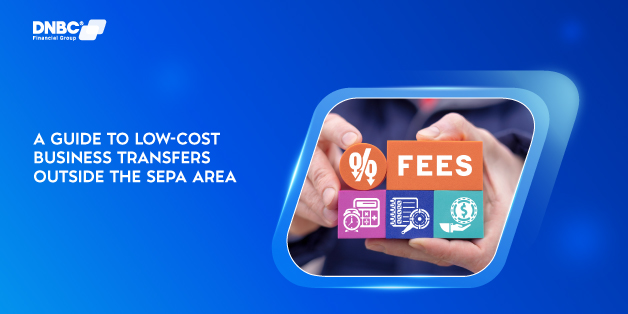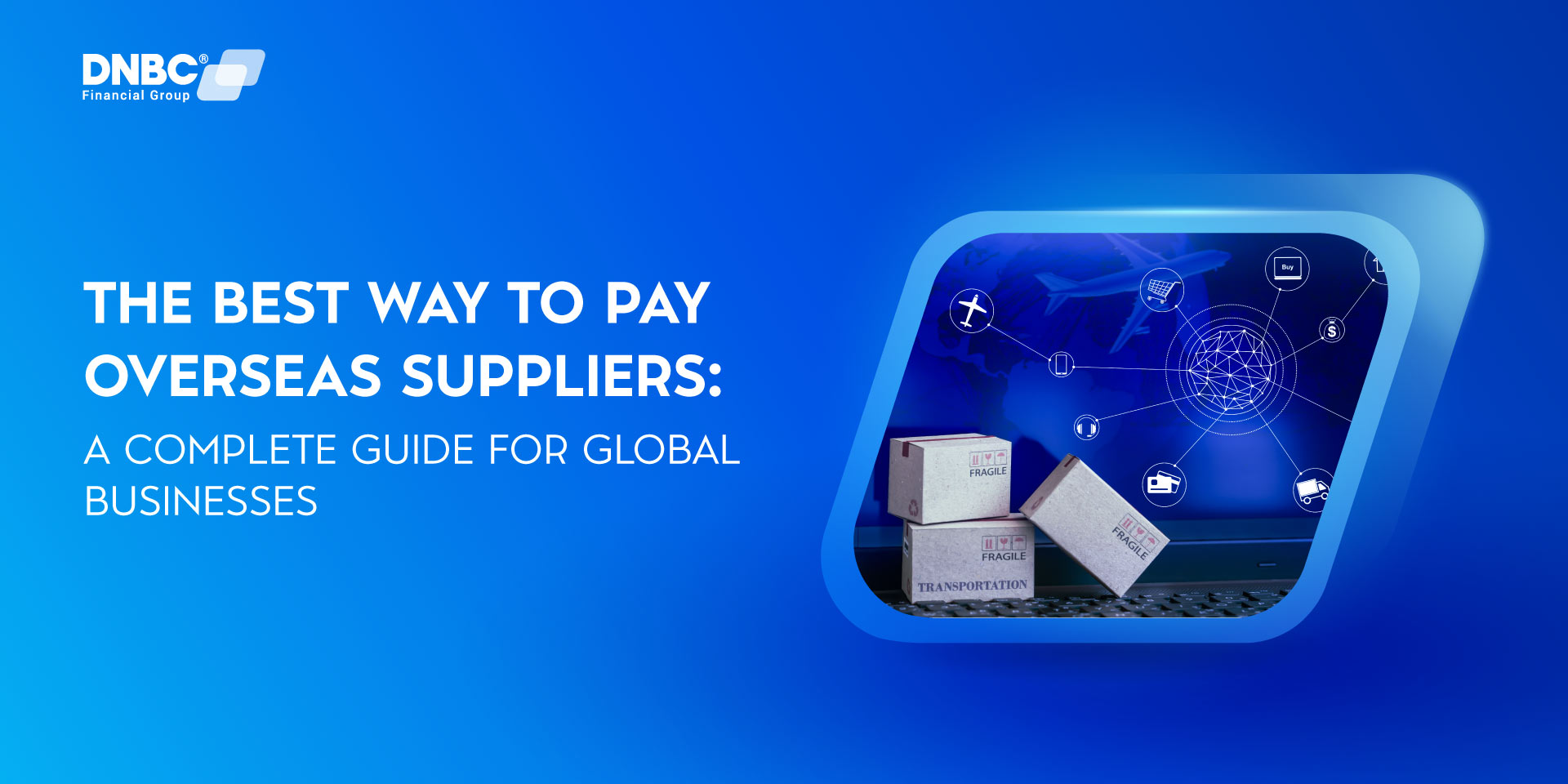- Home
- Blog
- Business Finance
- Understanding Routing Transit Numbers and International Remittance for Businesses
Understanding Routing Transit Numbers and International Remittance for Businesses
Business Finance
15 May 2024
DNBC Team
This article is a part of DNBCGroup Blog Center
Contact DNBCGroup for the technology news, tips, trends, and updates.
Understanding the basics of remittance and money transfers is crucial for any international remittance business. A key component of this process is the Routing Transit Number, which plays a vital role in ensuring secure and efficient transactions. In this post, we'll explore the importance of Routing Transit Numbers, discuss the challenges businesses face when opening accounts, and propose solutions for seamless international money transfers. We'll also highlight how DNBC services can support businesses in global and European markets.
Basics of Remittance and Money Transfers for Businesses:
What is Remittance?
Remittance refers to the process of transferring money from one party to another, typically across borders. While it is often associated with foreign workers sending money back to their home countries, in a business context, remittance encompasses the transfer of funds internationally to support trade, pay suppliers, or manage overseas operations. These transactions are vital for maintaining cash flow and ensuring the smooth operation of global business activities. Efficient money transfer methods not only facilitate timely payments but also enhance the financial stability and credibility of a business. By leveraging secure and reliable remittance services, businesses can avoid delays, reduce transaction costs, and foster strong relationships with international partners.
How many types of Money Transfers?
There are numerous ways for businesses to transfer money, with each method designed to address particular needs and circumstances. The two main categories are domestic transfers and international transfers.
Domestic Transfers:
Domestic transfers involve the movement of funds within the same country. These transactions are generally quicker and less expensive due to the absence of cross-border regulatory checks and currency conversions. Methods include:
- Bank Transfers: Direct account-to-account transfers within the same financial institution or between different banks.
- Online Banking: Utilizing internet banking services to initiate and track payments.
- Mobile Payment Solutions: Using apps and mobile platforms for quick and convenient transfers.
International Transfers:
International transfers involve moving money across national borders. These transactions are more complex due to different banking regulations, currency exchanges, and the need for intermediary banks. Methods include:
- Wire Transfers: A secure method involving the transfer of funds through a network of banks or transfer agencies across the globe. Although reliable, wire transfers can be costly and take several days to process.
- Online Banking and Payment Services: Many banks offer online platforms that allow businesses to initiate international transfers. Additionally, specialized payment services like PayPal, TransferWise (now Wise), and others provide user-friendly interfaces for sending money internationally, often at lower fees and faster speeds.
- SWIFT Network: The Society for Worldwide Interbank Financial Telecommunication (SWIFT) allows banks to exchange financial transaction information securely and uniformly, aiding international transfers.
- Cryptocurrency Transfers: An emerging method where businesses use digital currencies like Bitcoin for international payments. This method offers lower transaction fees and faster processing times, but comes with higher volatility and regulatory scrutiny.
Each method has its own strength and weakness. Wire transfers, while secure, can be expensive and slow. Online banking and payment services offer greater convenience and often lower fees but may come with transaction limits. Cryptocurrencies provide an innovative solution but are subject to regulatory and market risks. Businesses must evaluate their specific needs, transaction volumes, and risk tolerance to choose the most suitable money transfer method.
What is a Routing Transit Number?
Definition and Explanation:
A Routing Transit Number (RTN) is a nine-digit code used by financial institutions in the United States to identify specific banks and credit unions. Known as an ABA (American Bankers Association) number or routing number, this code is vital to the banking system. Each RTN is unique to a particular financial institution and is used to direct the processing of checks, electronic funds transfers, direct deposits, and other automated transfers. By ensuring that funds are routed to the correct bank, RTNs help maintain the accuracy and efficiency of financial transactions, making them indispensable for both domestic and international money transfers.
The structure of an RTN includes three components:
- The first four digits represent the Federal Reserve Routing Symbol, indicating the district and regional processing center.
- The next four digits explain the specific financial institution.
- The final digit is a check digit, used to validate the authenticity of the routing number.
RTNs are typically found on the bottom left corner of checks and are used in conjunction with the account number to facilitate various banking transactions. Their widespread use underscores their importance in ensuring smooth and secure financial operations.

Role in International Money Transfer:
Routing Transit Numbers are essential in international money transfers as they help identify the financial institution receiving the funds. This identification is crucial for ensuring that funds reach the correct destination without error. In international transactions, the RTN works alongside other codes such as SWIFT/BIC codes to facilitate cross-border payments. While SWIFT codes identify specific banks globally, RTNs ensure that within the U.S., funds are directed to the correct bank branch.
Errors in routing numbers can lead to significant delays and financial losses. For businesses, such delays can disrupt cash flow, delay payments to suppliers, and cause operational inefficiencies. Therefore, accurate use of RTNs is vital for the reliability and speed of international money transfers. Furthermore, RTNs enhance transaction security by offering a reliable way to verify the receiving bank's identity, minimizing the risk of fraud.
Difference Between RTN and Transit Code:
Although often used interchangeably, Routing Transit Numbers (RTNs) and transit codes serve similar but distinct purposes in different regions. Understanding the context and usage of each is crucial for businesses operating internationally.
Routing Transit Number (RTN):
- Usage: Primarily used in the United States.
- Function: Identifies U.S. financial institutions for domestic and international transactions.
- Structure: A nine-digit code including the Federal Reserve Routing Symbol, bank identifier, and check digit.
Transit Code:
- Usage: Commonly used in countries like Canada.
- Function: Identifies Canadian financial institutions for domestic and cross-border transactions.
- Structure: A series of numbers, often formatted differently than RTNs, such as the Canadian Transit Number, which includes the institution number and branch number.
Both RTNs and transit codes ensure the proper routing of funds, but they are specific to their respective countries' banking systems. For businesses engaged in international operations, it is essential to use the correct code type to avoid transaction errors and ensure timely payments.

Challenges and Barriers for Businesses When Opening Business Accounts:
Regulatory Hurdles:
Businesses face stringent compliance requirements, including KYC (Know Your Customer) regulations and extensive documentation. These regulatory hurdles can delay the account opening process.
Cost and Fees:
High costs associated with international transfers, hidden fees, and unfavorable exchange rates can be significant barriers for businesses.
Operational Barriers:
Time delays and lack of transparency from banks can hinder smooth international money transfers, affecting business operations.
Possible Solutions for International Remittance for Businesses:
Digital Banking Solutions:
Fintech solutions and digital banking platforms offer faster and more cost-effective money transfer options. They provide transparency and efficiency, making international transactions easier.
Multi-Currency Accounts:
Holding multi-currency accounts can reduce exchange fees and streamline transactions for businesses dealing with multiple countries.
Partnerships with Remittance Service Providers:
Partnering with specialized remittance services can offer better rates and reliability, enhancing the efficiency of international money transfers.
How DNBC Services Can Support Business in Money Transfer Globally and in Europe:
Overview of DNBC Services:
DNBC offers a range of services designed to support businesses in international money transfers. Their services are suitable for the needs of businesses operating internationally and within Europe.
Advantages of Using DNBC:
DNBC provides cost-effective solutions, ensuring that businesses can transfer money efficiently without incurring high fees. Their services are quick, dependable, and backed by dedicated customer support teams.
Conclusion:
Understanding Routing Transit Numbers and the basics of international remittance is crucial for businesses engaged in global trade. While there are challenges in opening business accounts and transferring money internationally, solutions such as digital banking and specialized remittance services can make the process smoother. DNBC offers comprehensive support for businesses looking to streamline their international money transfer processes, ensuring efficiency and reliability in global and European markets.
Your Trusted Partner
In your Digital
Journey
Free 1 - on -1 support
Free account opening fees
No hidden fees
Note: The content in this article is for general informative purposes only. You should conduct your own research or ask for specialist advice before making any financial decisions. All information in this article is current as of the date of publication, and DNBC Financial Group reserves the right to modify, add, or remove any information. We don’t provide any express or implied representations, warranties, or guarantees regarding the accuracy, completeness, or currency of the content within this publication.
Related posts

A Guide to Low-Cost Business Transfers Outside the SEPA Area
04 July 2025

How to Set Up a Business Escrow Account: A Simple Guide
20 June 2025

Cross-Border Business: Opportunities and Challenges in the Global Marketplace
23 May 2025

The Best Way to Pay Overseas Suppliers: A Complete Guide for Global Businesses
22 May 2025

Real Time Cross Border Payments: Shaping the Future of Global Financial Transactions
22 May 2025